'High expectations': What are 'traditional schools,' and who are they for?
When Andrew Feight became principal of Alhambra Traditional School, drawn by its record of developing high-performing elementary school students, he tried to gain a stronger understanding of what, exactly, it means to be a "traditional school."
“As I’ve tried to learn that, I’ve realized there isn’t a great definition out there,” Feight said.
He Googled. He asked around. He found that some people think of “traditional” as the “way we learned when we were growing up.” Others think it means homework and discipline.
When it comes to what traditional schools in Arizona are doing, “everybody kind of says, ‘back to basics,’” he said.
Feight understands Alhambra Traditional School to be the first traditional school in the Valley. It was founded in 1983 and is part of the Alhambra Elementary School District, which includes parts of Phoenix and Glendale.
Now, there are dozens of traditional schools.
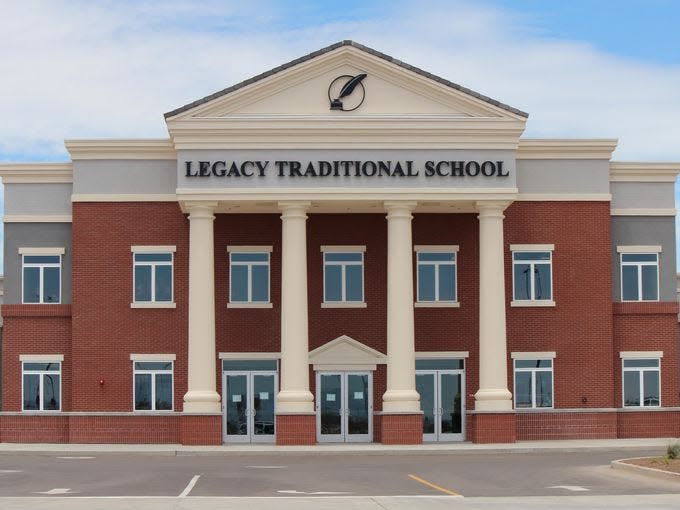
Legacy Traditional Schools — a network of charter schools in Arizona, Nevada and Texas — has 21 schools in Arizona. Many Phoenix-area public districts have their own traditional schools as well.
There are certain hallmarks of traditional schools across the Valley: strong partnerships with parents, an accelerated pace of study and a “back-to-basics” curriculum. Many have uniforms, though Alhambra's does not. At Alhambra Traditional School, middle schoolers’ phones are placed in pouches during the school day, homework is graded and impacts a student's overall grade, something that isn't done at all of the schools in the district, and students start learning the next grade level’s standards by the end of the school year.
Feight defines his version of “traditional” with the metaphor of a three-legged stool”: high expectations for students, high expectations for parents and high expectations for staff.
The school has seen immense academic success on statewide assessments compared to the district and the state as a whole. But weighed against other schools in the district, Alhambra's traditional school serves a smaller share of students eligible for free and reduced-price lunch, students with disabilities and English-language learners.
Finding every instructional minute, but leaving time for electives
By three weeks into the school year, Alhambra Traditional School staff had shaved the transition time from morning recess to classrooms for the school’s 742 students down to three minutes, Feight said.
In the moments before school officially begins, a first-grade class silently eats breakfast while listening to a Curious George audiobook about Mount Rushmore; an eighth-grade class silently cuts out shapes from geometry worksheets. They sit at desks in pairs of twos, facing the front of the room.
“Well-structured classrooms have a morning routine when kids are coming in,” Feight said. Even before school officially starts, teachers find ways to engage students, which often involves reviewing worksheets.
It’s a way to maximize instructional time for students — a goal that drives all the school’s decisions, Feight said.
“You hear frequently, ‘back-to-basics,’ but really what that looks like is we design our day and our schedule to really focus on teaching kids skills,” he said. “So, we really limit a lot of the other stuff.”
When younger grades take bathroom breaks, they sit silently, cross-legged, in a line against the wall as they wait for their turn. They’re all reading — in one second-grade class, students flip through picture books like "Owly" and "Captain Underpants."
“We make sure that every chance we have a second for kids to learn, that they are learning,” Feight said.
The silent bathroom reading line is not a coincidence, nor is it a coincidence that when younger students wave at Feight in the hallway, they do so by waving one finger rather than an entire hand to minimize disruption. At the start of the school year, students are explicitly taught behavioral expectations in 12 mini-lessons. They’re told to read while they’re waiting for the bathroom — as well as to remain silent in the hallways, to keep their hands to themselves in the lunch line and to hold their lunch tray with both hands.
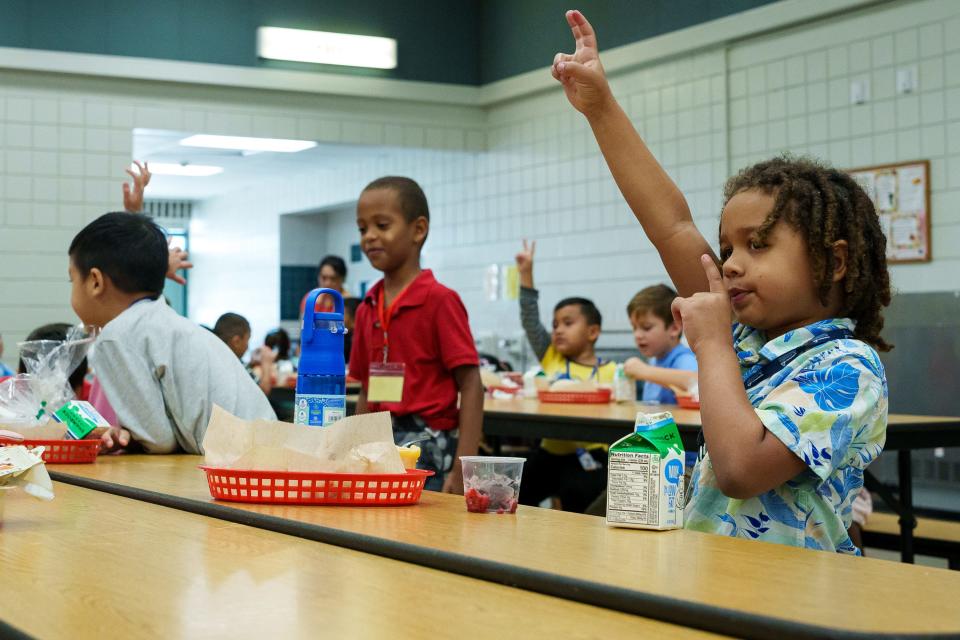
“Really, that detailed,” Feight said. “We need disruption-free classrooms, and we need kids who are motivated.”
This sentiment is echoed on the website of Peoria Unified School District’s traditional school, which describes a review process for admission that involves past discipline records and evidence a student is motivated. The website of Madison Traditional Academy, a traditional school in the Madison Elementary School District, states that families must meet the "behavior, attendance and family volunteer requirement to continue each year."
At Alhambra Traditional School, as the school year begins, students also practice procedures — like getting their textbooks out quickly, packing their backpacks quickly and turning their homework in quickly — which are all opportunities to pick up instructional time, Feight said.
“Everywhere, you see things are orderly,” he said. “All of that stuff, you gain those minutes back.”
Transitions between classes are tight: “If we can do that in three minutes versus eight minutes … if you have six transitions, you can pick up five minutes times six. That’s 30 more minutes that you’re teaching.”
But that doesn’t necessarily mean kids are thrown out of classrooms for causing disruptions, Feight said.
“Pulling a kid out of class for a discipline issue is about the most unproductive thing you can do,” he said. He sees relationships with students as the best tool an educator has for handling disruptions — and parents and the school’s counselor play a role, too, in supporting students who may be having issues in the classroom. There’s also a short detention during recess with a counselor for students who cause, say, three or more disruptions in a class, Feight said.
And while limiting the “other stuff” besides instructional time might mean the school doesn’t introduce a “bunch of extra programs,” Feight said, it doesn’t mean that there’s no fun or that kids aren’t receiving “social learning” in class.
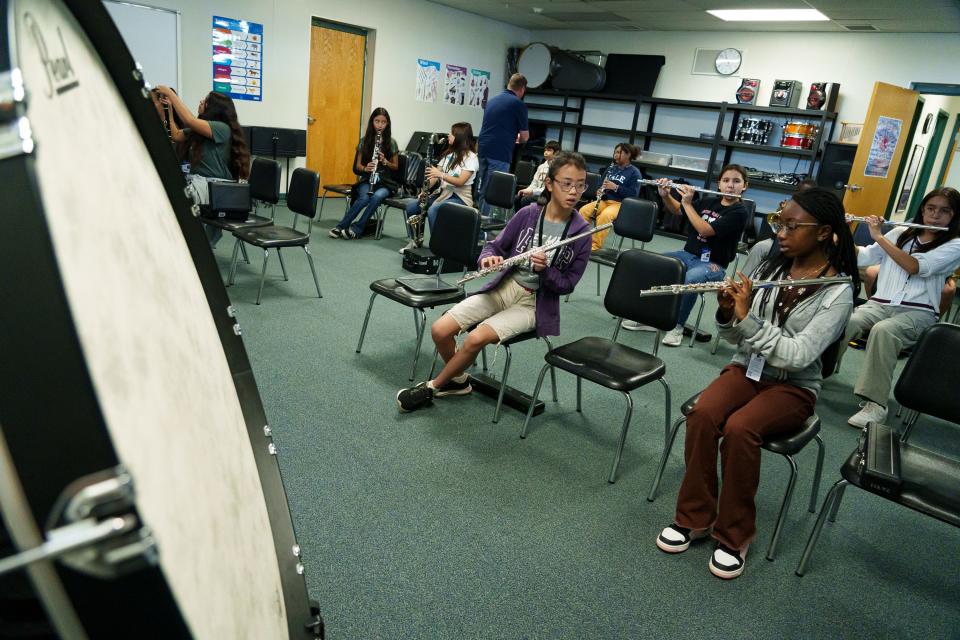
Students take electives like physical education, choir, band, art and a technology class that focuses on 3D manufacturing and augmented reality. They participate in after-school clubs like newspaper, kickball and sewing.
And they receive 10-minute mini-lessons on social and emotional learning from the school’s counselor a couple of times per month, focusing on positive character traits, kindness, positive self-talk, resiliency or checking in with friends, depending on what specific classrooms or students might need, Feight said.
Classic literature instead of workbooks, cursive and 'direct instruction'
Alhambra Traditional School’s reading and writing instruction is driven by the Spalding method, an educational philosophy and method of teaching created in 1986 and guided by the Phoenix-based nonprofit Spalding Education International.
It teaches the “science of reading,” a phonics-based instructional method. Phonics instruction, which teaches kids to read by sounding out words, is required by the state, but there are ways that the Spalding method is unique from other types of teaching.
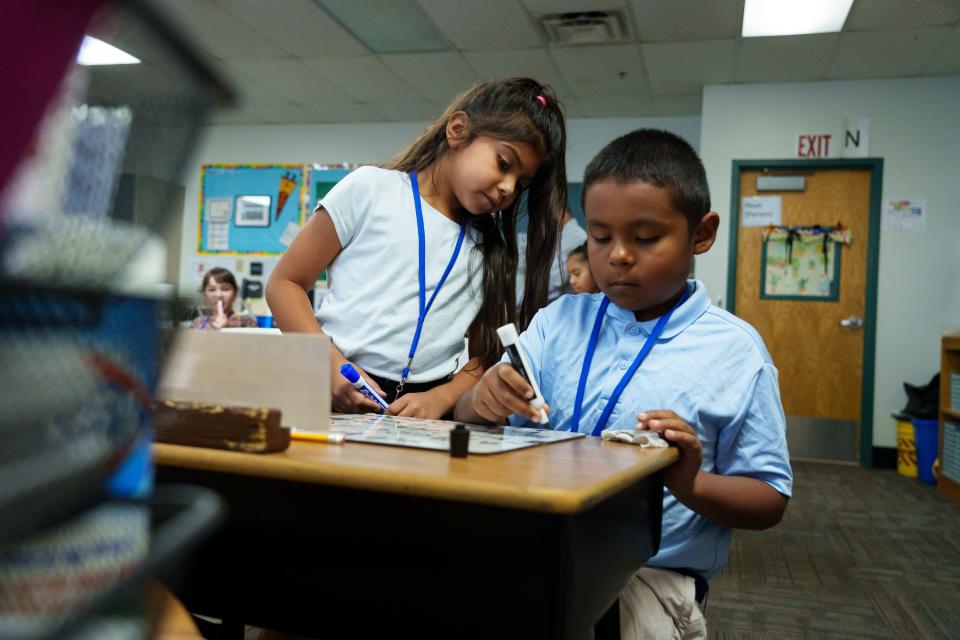
It’s a hallmark of many traditional schools across the Valley, said Crystal Telep, the director of customer relations for Spalding Education International, because Spalding fits well within the classical school of educational thought followed by most traditional schools.
While many schools use curriculums and workbooks that offer a more scripted program, the Spalding approach does not follow that model, Telep said.
“There’s no Spalding workbooks,” she said. “We use classic literature … and we use paper and pencil.”
The method is also accelerated — while most kindergarten curriculums may only introduce the alphabet, for example, Spalding teaches all of the letter combination sounds needed to read, as well as simple and compound sentences.
Plus, Spalding requires students to primarily write in cursive from third through sixth grade.
“It’s important that they have an understanding of how to read and write in cursive,” Telep said. “A lot of our historical documents are only written in cursive.”
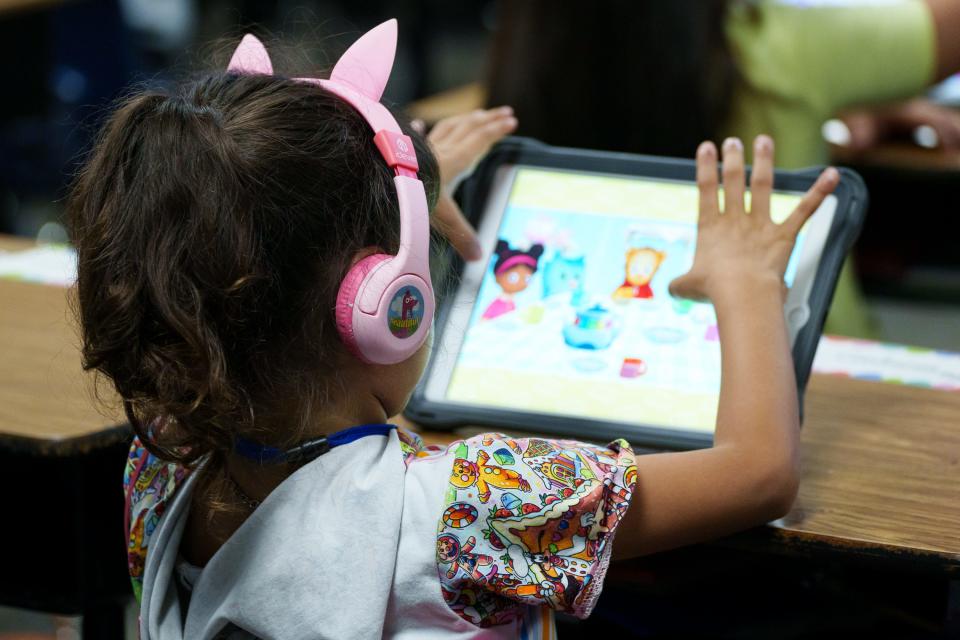
Only 12 schools in Arizona are Spalding accredited, due to how rigorous the process is, and they are all traditional schools. Alhambra Traditional School is one of them. It was the first in Arizona to receive a Spalding accreditation in 2002. That means that all of its teachers have received at least 90 hours of training in the method, there’s a Spalding-certified teacher at every grade level who has received 180 hours of training, and there’s at least one Spalding instructor who has received even more extensive training, Telep said.
But many more schools across the Valley receive training in the method, including some schools that don’t have the traditional label, as well as the Legacy Traditional charter network and traditional schools in Mesa, Peoria, Gilbert and Chandler. Within the Alhambra School District, three additional schools began receiving training in the Spalding method this year, Telep said.
The school’s use of "direct instruction" also sets it apart, Feight said. The method of teaching is described by the National Institute for Direct Instruction as a teaching model that “emphasizes well-developed and carefully planned lessons designed around small learning increments and clearly defined and prescribed teaching tasks.”
There are misconceptions, Feight said, that direct instruction involves a teacher standing at the front of the classroom for an hour, talking, while kids are taking notes.
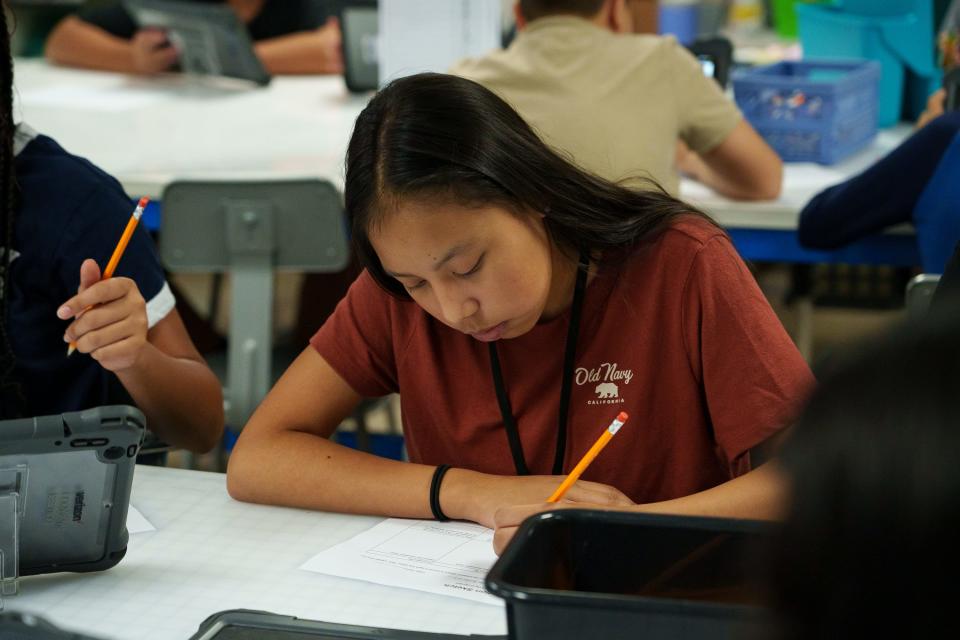
“That's actually not a good description of what research tells us good teaching is,” he said. Instead, direct instruction, which is the primary way Alhambra Traditional School's teachers teach, involves teaching the material in chunks — and checking consistently to make sure students understand before moving on.
Direct instruction is in contrast to other teaching models, Feight said, that might involve longer periods of straight teaching, or self-paced learning on an iPad, or “some overuse of group work,” he said.
Traditional schools outperform, but have different student populations
Alhambra Traditional School is a school of choice, meaning that all of its students, including those who live within district boundaries, apply through the open enrollment process. This is also the case for the district’s International Baccalaureate school and its Valencia Newcomer Academy, which is a school for students who are newcomers to the U.S.
At Alhambra Traditional School, nearly two-thirds of the students come from outside of the district’s boundaries, according to the most recent available data from the Arizona Department of Education.
Its students have been incredibly successful by many measures typically used to indicate school performance. In 2019, it was awarded the National Blue Ribbon of Excellence, an award from the U.S. Department of Education to recognize schools that are among their state’s highest-performing schools on assessments or in closing achievement gaps.
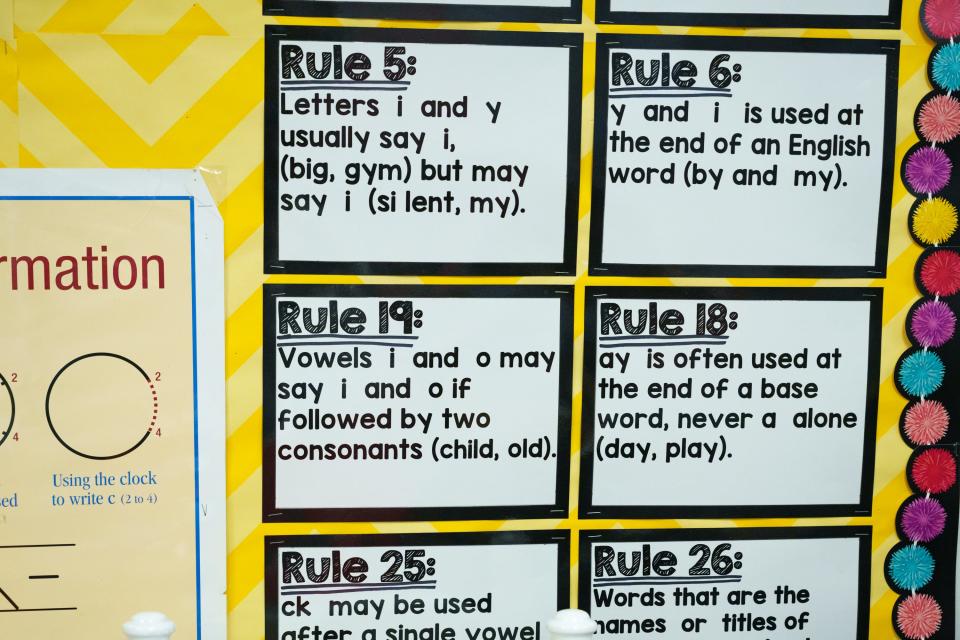
Alhambra Traditional School's students scored far higher than the district and the state for both English language arts and math on the 2023 statewide assessments: 77% of students were proficient or highly proficient in English language arts, compared to 24% in the district and 41% in the state, and 77% of students were proficient or highly proficient in math, compared to 21% in the district and 34% in the state.
The school has a smaller share of inexperienced teachers, too — according to its school report card from the state education department, about 6% of its teachers have less than three years of experience, compared to about 12% in the district and 21% percent in the state.
Nearly 40% of Alhambra Traditional School's teachers have been there for over two decades, according to district spokesperson Gabriel Gamiño.
But not every student is able to succeed at the traditional school, and Feight tells this to interested families before they decide to enroll their child because it's important that students like school, he said.
Four decades ago, Alhambra Traditional School was founded by a group of parents looking for a public school based on a traditional model, and the culture of parental involvement has remained with the school ever since.
It’s one way that the traditional school model is not for every family, according to Feight.
In some schools, parents might lean on the school to “do it all,” he said. But that’s not possible at Alhambra Traditional School. The school has high expectations for parental involvement.
“There's only so much we can do with our school staff, and we need partnerships with parents to get the other stuff done,” he said.
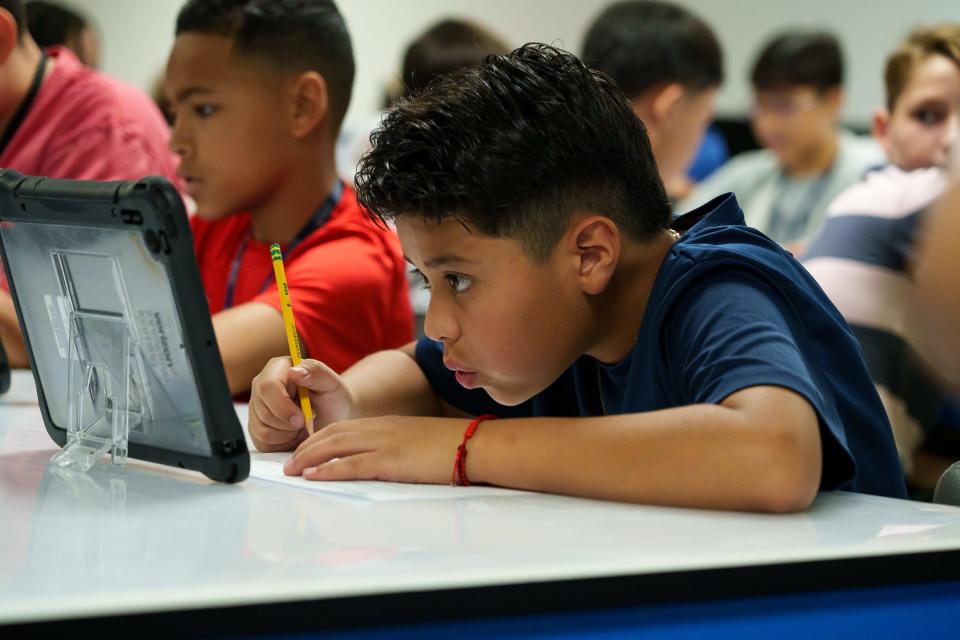
He tells this to prospective parents. If they don’t want to — or can’t — help with homework, which is given four nights a week, their children are going to “struggle to feel successful” at his school.
Especially for younger students, parents need to be “sitting at the kitchen table with kids, making sure that they’re understanding,” and then reaching out to teachers if their child needs extra help, Feight said. If emergencies arise, Feight said, he offers additional support, like allowing a student to do homework in his office in the morning.
If parents aren’t interested in participating, he tells them that “there are other good schools out there that don’t have that component that is part of the culture,” he said.
Not many schools are achieving similar levels of academic success with similar demographics, Feight said. More than half of Alhambra Traditional School's students are eligible for free and reduced-price school meals. (Last year, the district decided to pay for all student’s lunches, regardless of eligibility status.)
Still, the traditional school has the lowest percentage of students eligible for free and reduced-price school meals in the district, at 56%. Only one other school in the district has below 60% of students eligible: the district’s International Baccalaureate school. Of the district’s 16 schools, including its preschool academy, six have greater than 90% of students eligible — four are equal to or greater than 98%.
That pattern holds true for English language learners. While 34% of the district’s students are English language learners, that number is about 9% for the traditional school, according to Arizona Department of Education data from the 2023-24 school year.
The traditional school also has a lower percentage of students with disabilities than the district as a whole. This is true for most of the 22 traditional schools across 15 Maricopa County public school districts, according to 2023-24 enrollment data from the Arizona Department of Education.
Across the Alhambra Elementary School district, about 12% of students have a disability, defined as students who identified as having a special education need. At the district's traditional school, that number is about 2% — just 16 students.
“The reality is … a lot of those kids struggle academically and in a really accelerated program, they don’t feel good about themselves,” Feight said, referring to students who receive special education services. “It doesn’t mean that kids can’t take advantage of it,” but at Alhambra Traditional School, students are learning the material at a faster rate than at other schools, he said.
The school doesn’t have a full-time special education teacher because they don’t have a full-time caseload, he said.
Fighting for students in a competitive choice school marketplace
As a “school of choice,” Alhambra Traditional School is faced with the same pressures that many public schools in Arizona’s choice-rich landscape encounter. Feight gives tours to prospective parents throughout the school year, and he often finds that families are exploring all of their options, including charter and private schools.
“The world’s a changing place in relation to how parents are choosing schools,” he said. “Historically, a lot of times, your roster might be filled in April/May.” But now parents are “school shopping,” which often means waiting until the last minute to enroll.
In this competitive landscape, Feight and the district as a whole engage in marketing and recruitment efforts year-round.
Last year, according to Gamiño, the district purchased three reports from a company that provides marketing data for $1,500: one showing new families in the area with preschool-aged children, another with new families with kindergarten-age children, and a monthly report of all new movers to the area. The district uses this data to send targeted flyers.
The traditional school separately purchased a year-long, $10,000 subscription to the school ranking and review site Niche. It offers search engine optimization and gives schools more control over their Niche profile, he said.
He’s still figuring out whether the Niche subscription is successful, he said. But if it brings in two new students, it pays for itself.
“I’ve got to compete with charter schools, is what it comes down to,” he said.
Madeleine Parrish covers K-12 education. Reach her at mparrish@arizonarepublic.com.
This article originally appeared on Arizona Republic: 'Back-to-basics': An in-depth look at a Phoenix 'traditional school'

